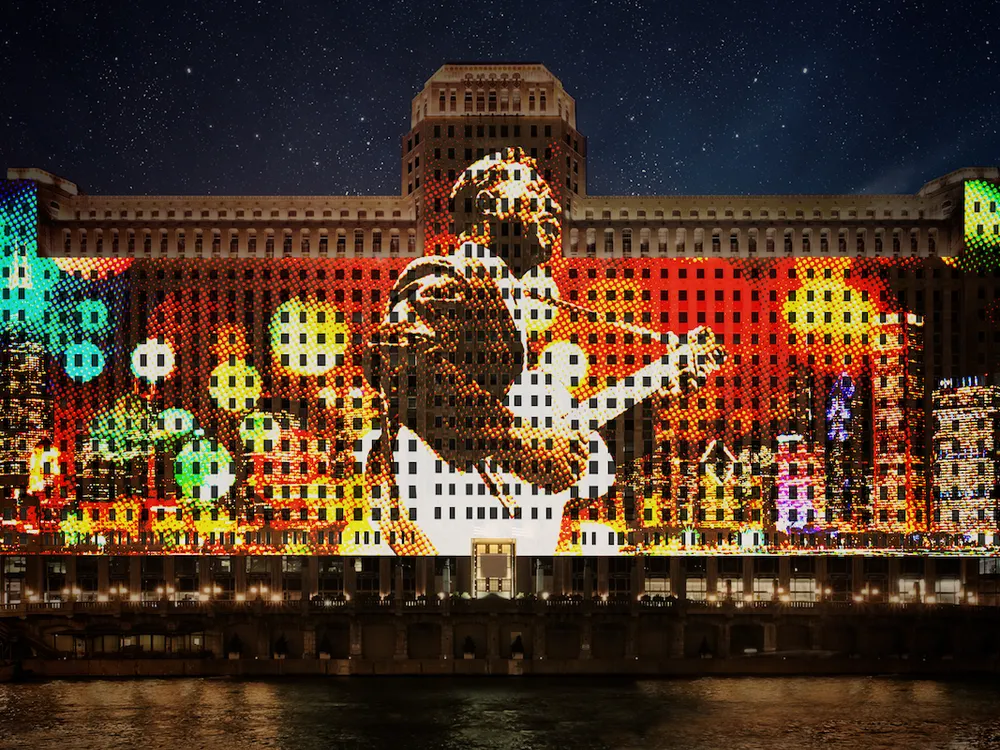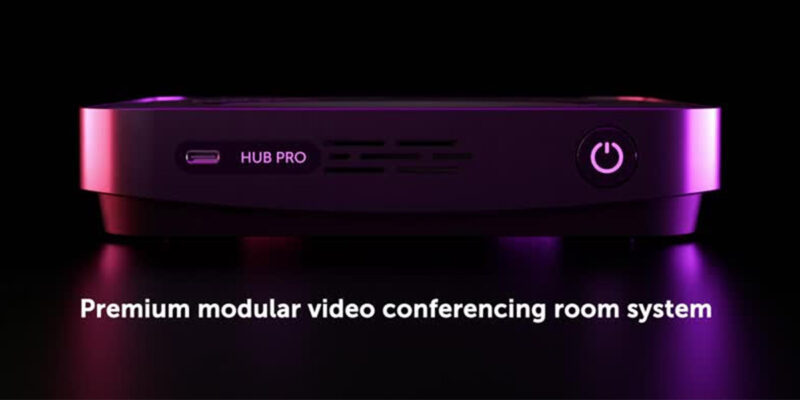A Glimpse Into the Magic of Projection Mapping
This Sunday, Chris Neto introduced the topic of projection mapping to the #AVintheAM community. I was busy with family activities throughout the day, and even though the topic was practically shouting my name, I had to sit it out … until now.
Projection mapping is often misunderstood. It involves much more than large-scale projection on a flat surface. If that’s all it were, dvLED and video wall technologies could compete — but they don’t. When you’re trying to activate a unique piece of architecture or an object (think: a building with windows and flourishes, a room with odd angles, or even a bridge, car or forest), projection mapping remains the best choice. It’s unmatched when dealing with complex geometry and varying depths.

Art the Mart, Chicago, IL
Projection mapping has evolved from niche art installations into mainstream spectacle. It’s become a digital chameleon, blending seamlessly into environments and transforming spaces into visual storytelling platforms. Once reserved for art circles, it now captures attention at concerts, product launches and corporate events — proving imagination is its only limit.
Consider events like the Sydney Opera House light show or a product reveal where a car seems to come alive, painted in light. These effects are made possible by projection mapping’s ability to blend and warp images using multiple projectors — like an orchestra of light. By adjusting each projector’s output, creators ensure the imagery conforms precisely to the surface, much like a conductor harmonizing a musical score.
As you can imagine, creating a projection-mapped experience takes far more than just lumens and resolution.
First, there must be a story. That story comes to life through custom content. Compelling visuals reinterpret structures or objects, turning them into immersive experiences.
To display that content as intended, those same surfaces must be recreated digitally in 3D. This is often done via laser scanning or by leveraging original CAD files. The resulting 3D models are imported into a warp engine — a digital tool that “bends” the content in reverse. Viewed on a standard screen, the result looks distorted — like a fisheye lens or funhouse mirror. But once projected onto the object, the geometry snaps back into place, and the illusion is complete.
With the story and visuals mapped, technical specs like brightness and resolution come into play. These determine how many projectors are needed to deliver the right clarity, intensity and contrast.
Then, depending on content complexity, projector count, and resolution, a high-end video processor is needed to warp, blend and deliver the content in real time. This is not a throwaway step—it’s the conductor’s baton. Products like Pixera, Green Hippo and Barco’s E3 are built for this task, offering the power, redundancy and reliability required for high-stakes moments.
Projection mapping doesn’t just display content — it transforms environments. Imagine a building turning into a cascading waterfall, a museum exhibit where dinosaurs roam, or a forest alive with light and motion. It blends with existing architecture, turning structures into active participants in the narrative. It blurs the line between physical and digital, creating experiences that don’t just captivate — but fully immerse.
As technology continues to evolve, projection mapping will push the boundaries of visual storytelling. Its ability to craft immersive, unforgettable experiences cements its role in the future of entertainment, art, and business. So next time you see a building come alive, remember: It’s not just a display — it’s a glimpse into what’s possible.





